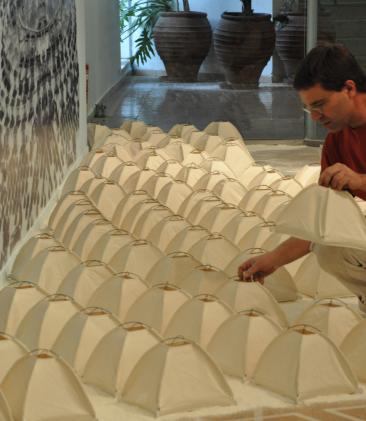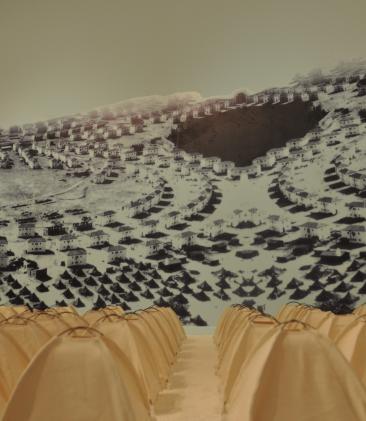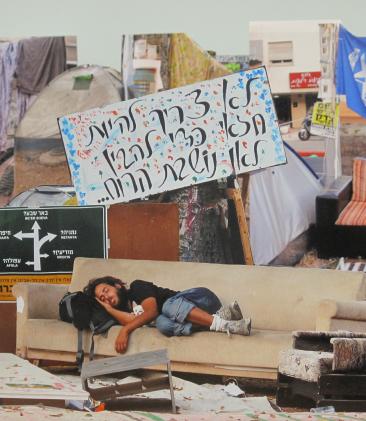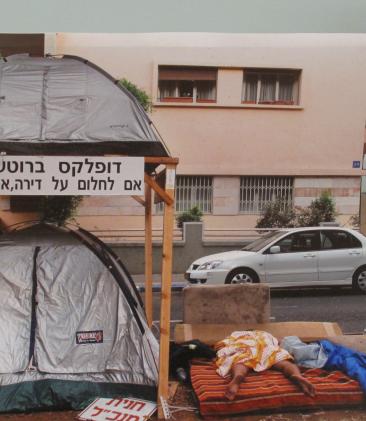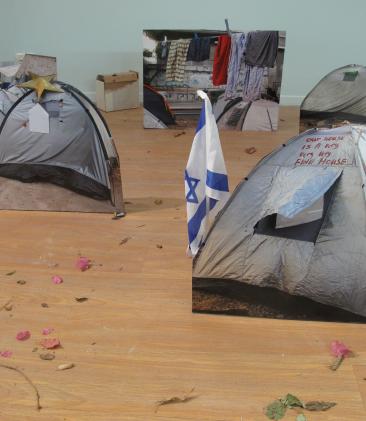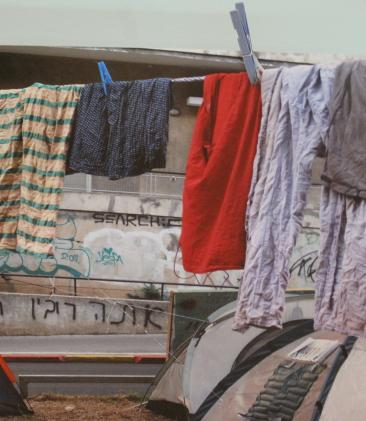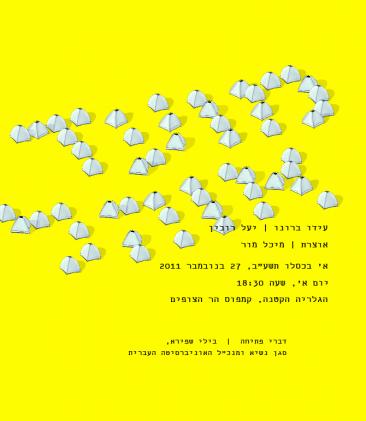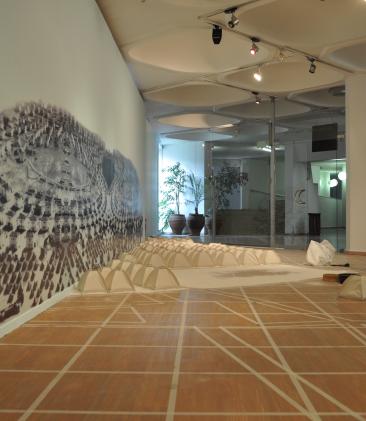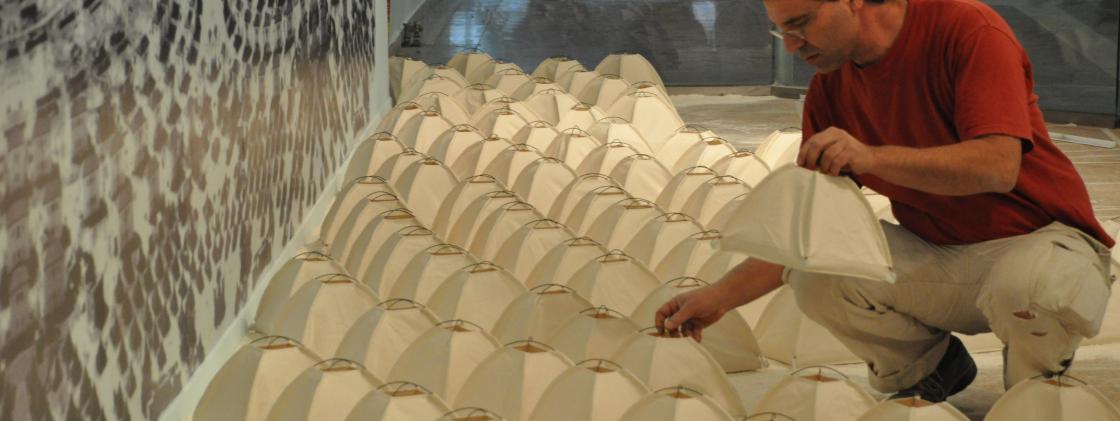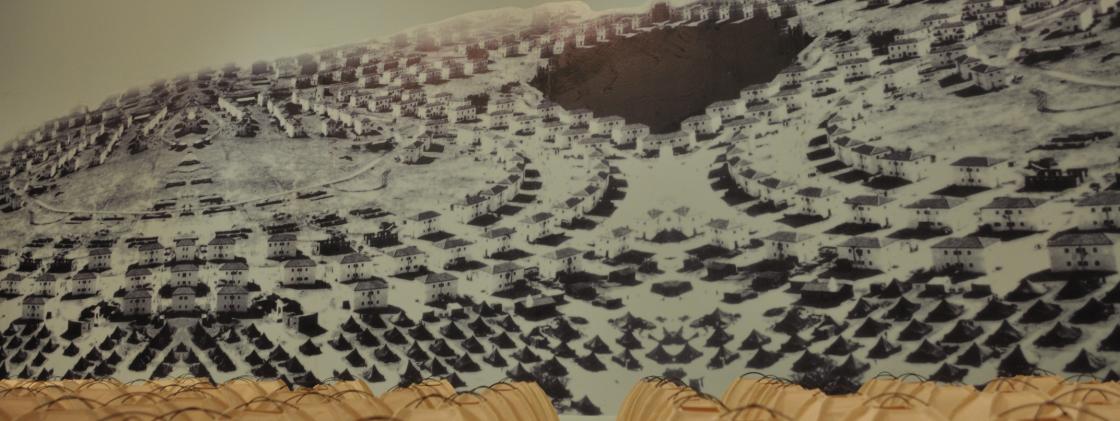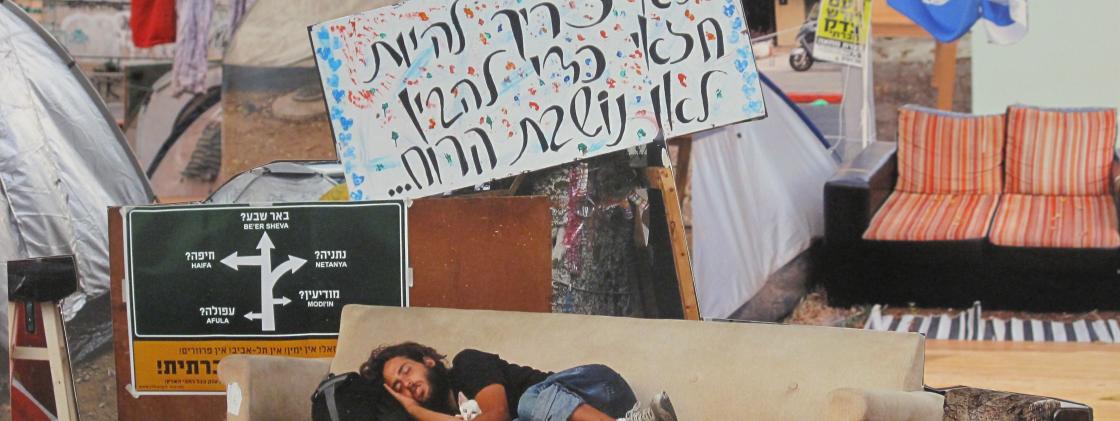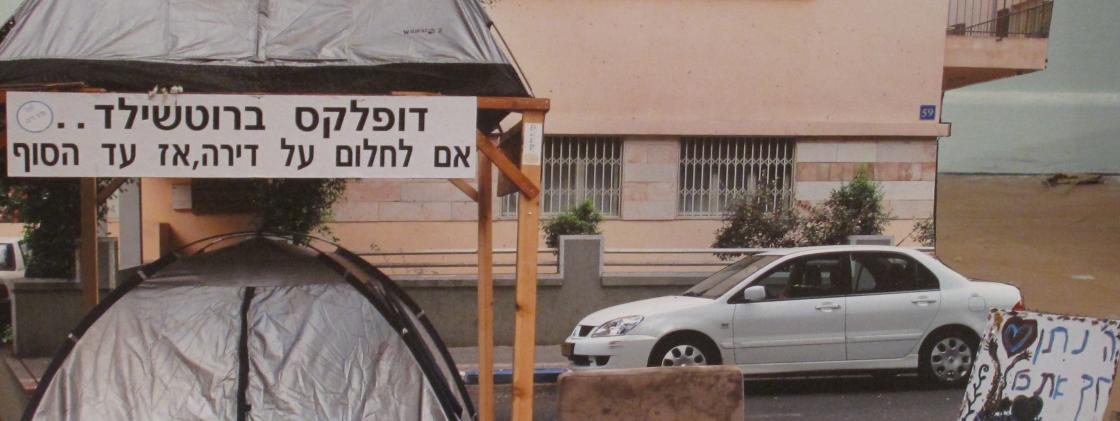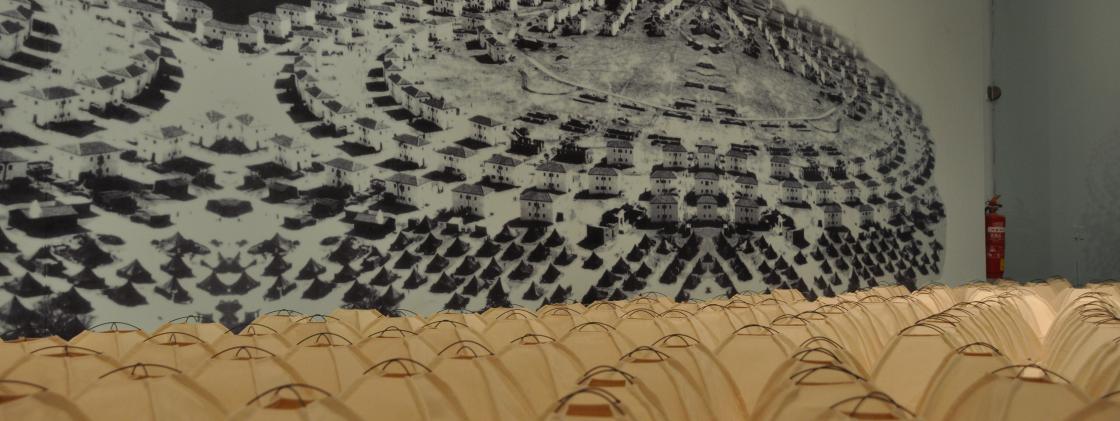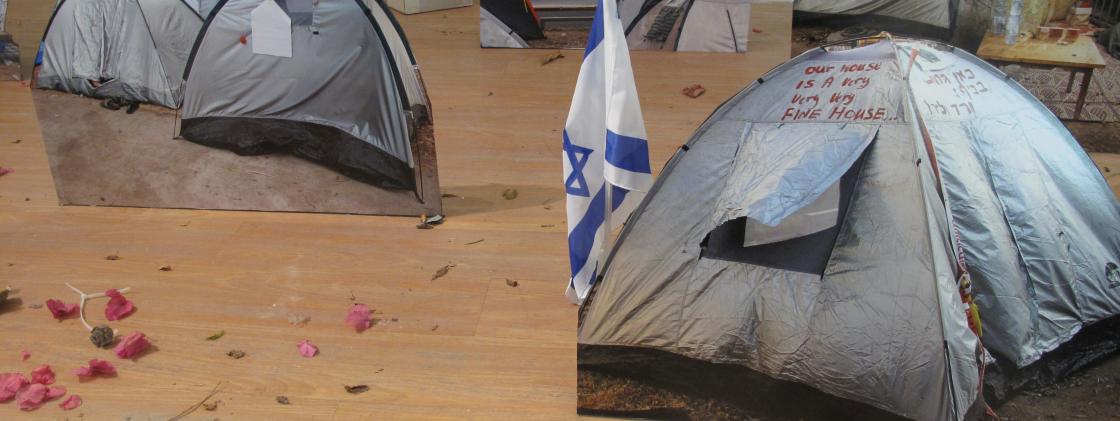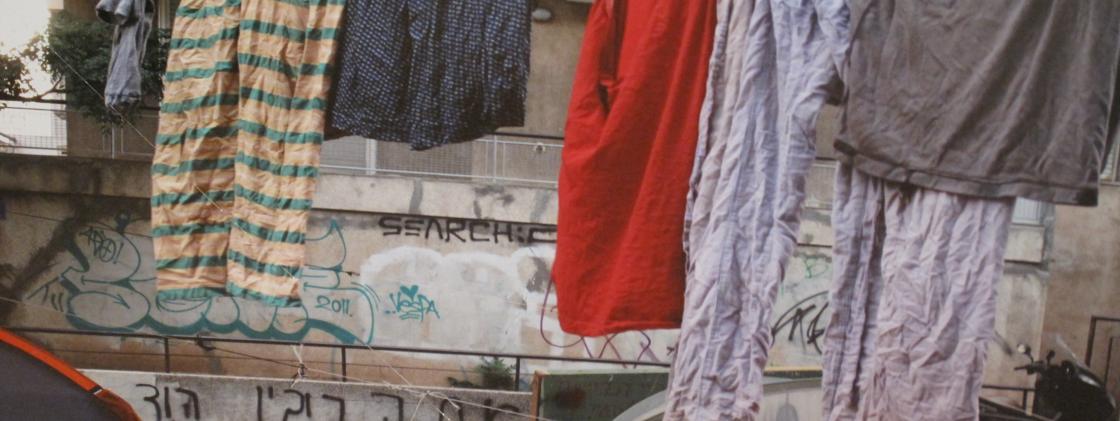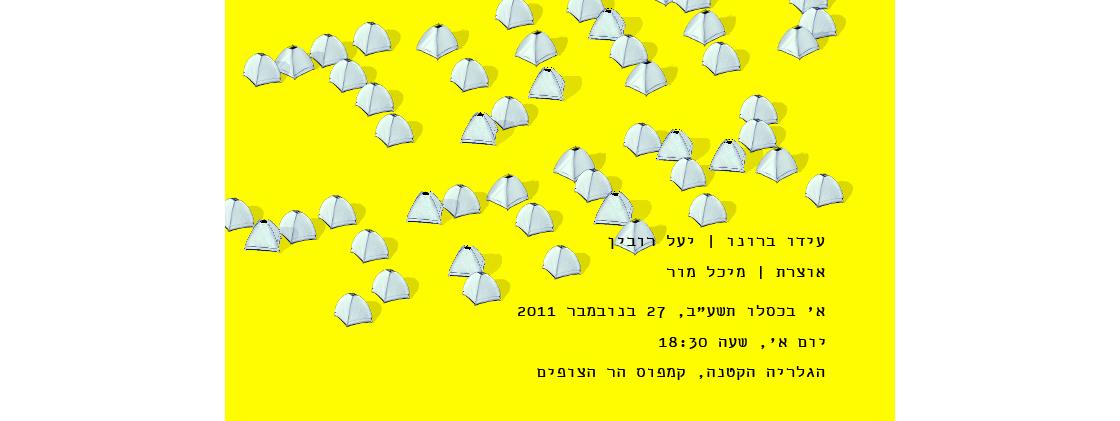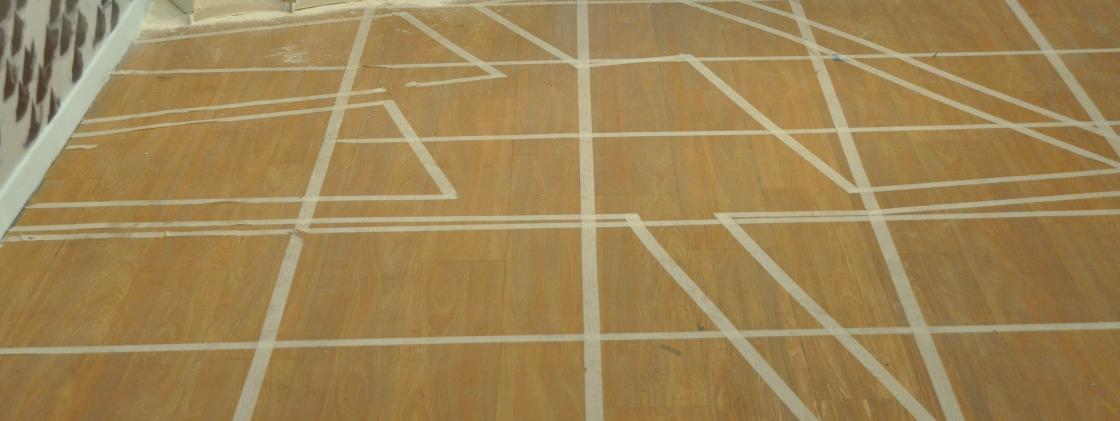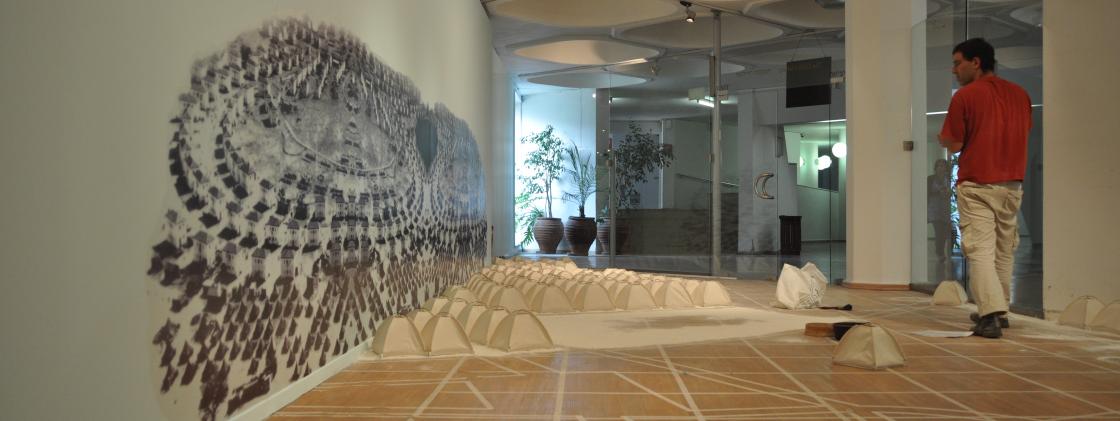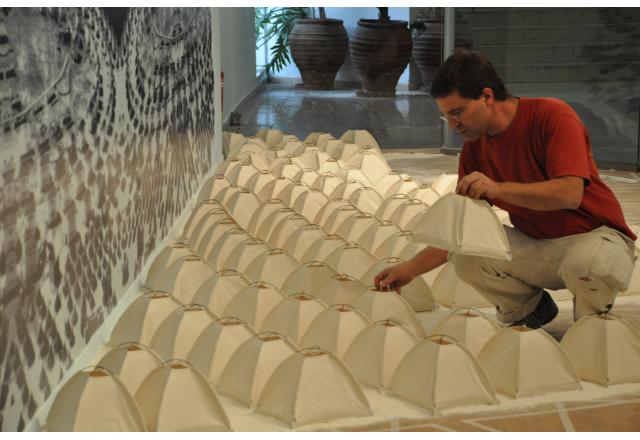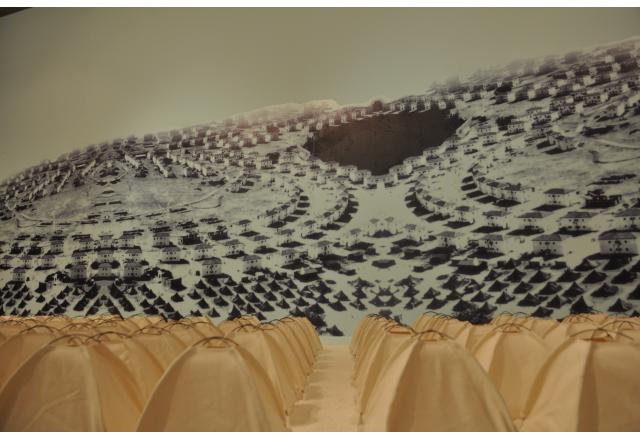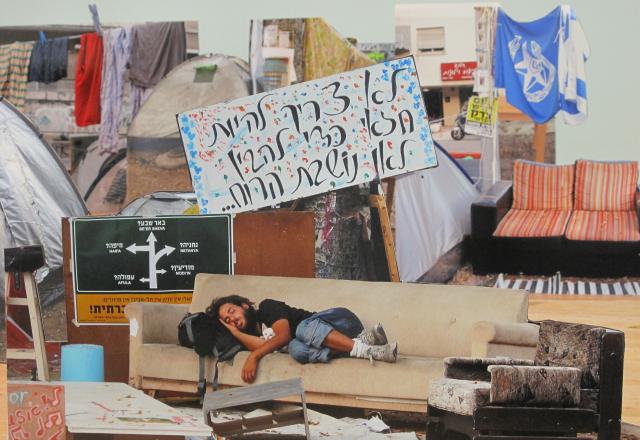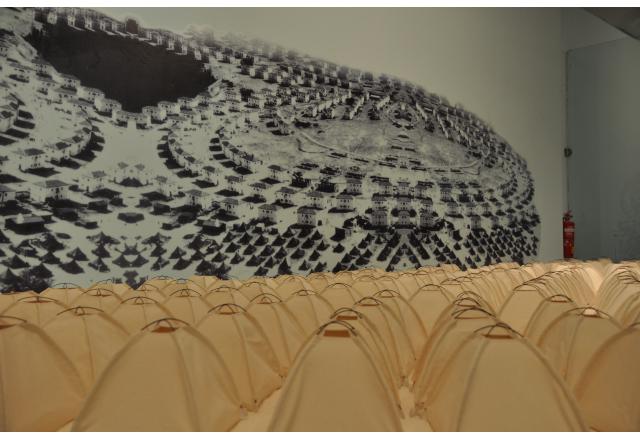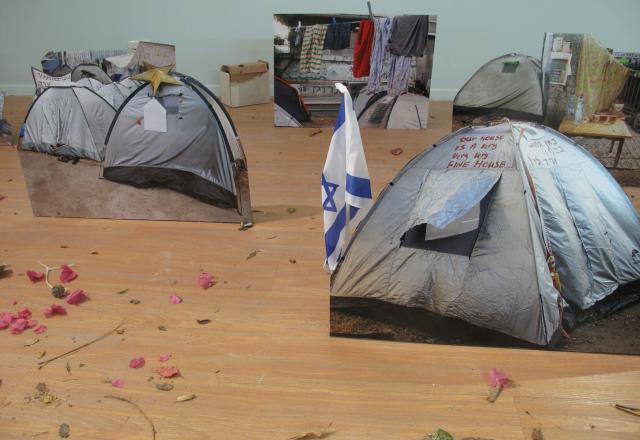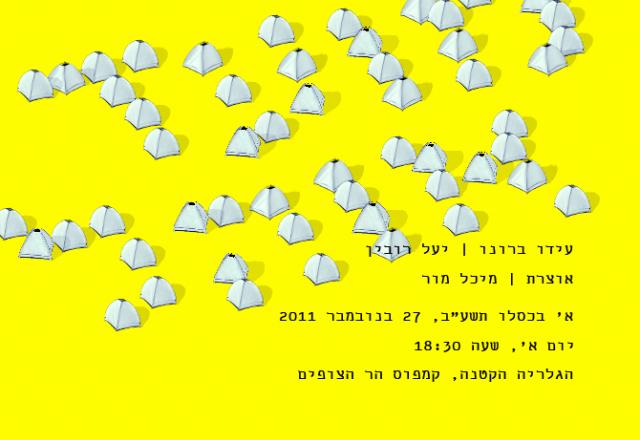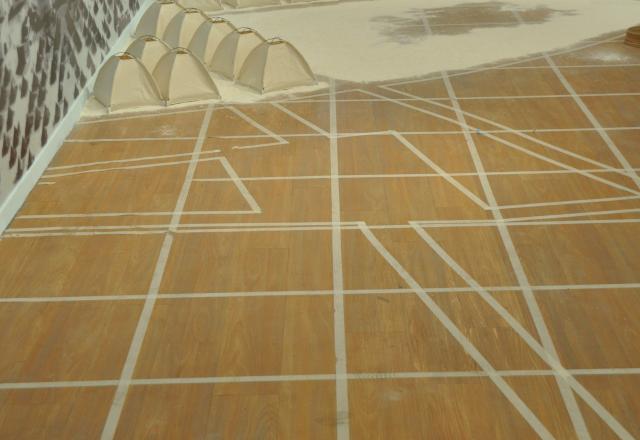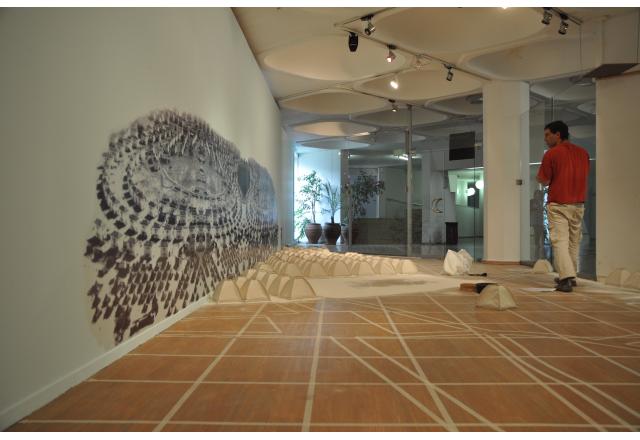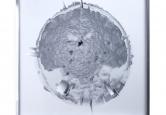This exhibition evolved just like the social protest we witnessed in 2011: figure after figure, tent after tent, appearing and forming the space, filling it. In reality, the tents were dismantled, but they were by no means a passing occurrence.
A Tent of Congregation (Ohel Moed) was considered the dwelling place of God when the people of Israel wandered the desert; in Hebrew, this term literally means 'Tent of Time', which was converted into Time of the Tent (Moed Ohel). The phrase Time of the Tent refers to the appearance of the first signs of maturity of a young generation that wishes to shape its future, challenges the social conventions in Israel and take a stand by erecting a tent.
The tent city, the huge installation that took shape in Israel, is conveyed by a duo of artists – Ido Bruno and Yael Rubin. A virtual protest turned into a real one, struck a tent peg in the ground of the boulevard, reached the streets of the cities and spread throughout the country. Like a stone creating ripples when thrown into water, in his Transit Camp for Immigrants (Maabarah) installation Ido laid out historical context and connected it to the present day. His transit camp tents entered every home, and their orderly installation is reminiscent of the settlements of immigrants in the white city during the early phases of Zionism. Ido scatters the tents and makes room for the protest activists in Yael's work. Yael creates different sounds and voices, colorful and lively, and thereby groups cities, people and places together.
Unconsciously, the protest resembled 'Foundation' (Yesod), the work of art by Micha Ullman located on Rothschild boulevard. From the late 1980s, the sculpture has displayed an outline of a house with four rooms, cast in concrete and submerged in the ground. Is this an outline for a new method of construction? An archeological excavation revealing a world that once was? The power of the work of art, like the power of the protest, is derived from this tension between covering and uncovering, between old and new.
Editor: Esther Tal
Graphic production: Ktzat Aheret
The exhibition as made possible thanks to the support of the University's administration




